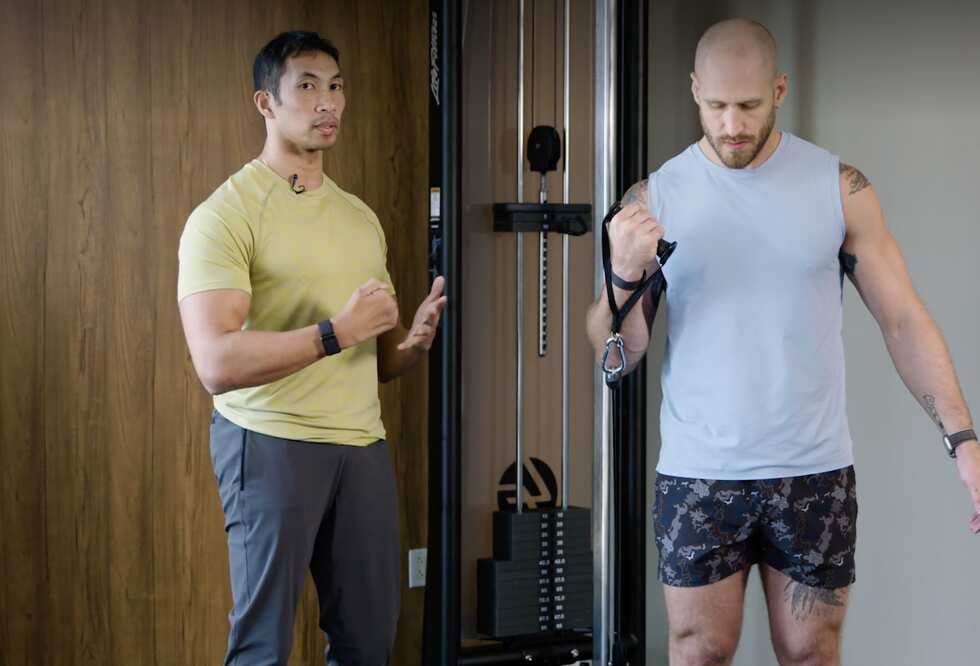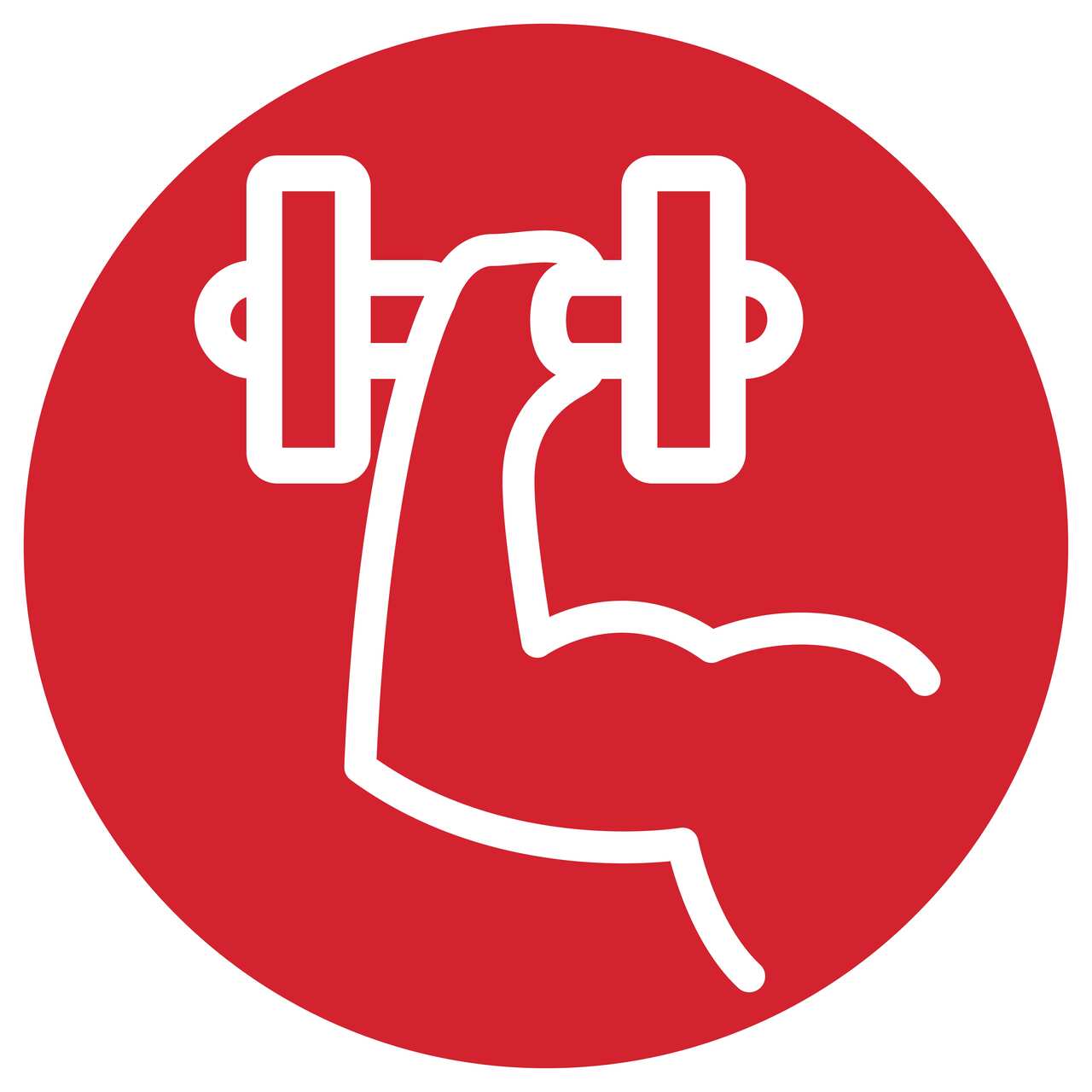IF YOU’RE LOOKING to blow up your arms, you've got plenty of training tools in your arsenal. You can use hammer curls, preacher curls, and of course, the tried-and-true standing biceps curls. All of these exercises will have you working with free weights (either dumbbells or barbells), which is great—but you’re missing out on some major arm gains if you never include another type of implement: cable machines.
When you use free weights, you'll only be able to work within a limited range of motion. You'll lack tension at the bottom part of the curl, which trains your biceps when they are at their most lengthened position. Cable biceps curls help maintain the angle of tension to strengthen biceps in a lengthened position—all needed for building those guns of glory.
If you’re looking to up your fitness game, adding cable biceps curls at the end of your workouts is a surefire way to address what you've been missing. Here Men's Health fitness director, Ebenezer Samuel, C.S.C.S., and senior fitness editor, Brett Williams, C.P.T., break down the benefits for the cable biceps curl, how to execute it correctly, and common mistakes to avoid.
Follow along with these steps to perform the cable biceps curl with proper form. Grab a cable machine and slide the handle down to the lowest setting to start. Begin with a lighter weight to get a feeling for the movement before challenging yourself by going heavier.
The cable biceps curl "fills in a critical blank that is missing from all the other curls you're doing," Samuel says.
When using free weights such as a dumbbell, barbell, or kettlebell, the easiest point of the exercise is when the elbow is straightened at the bottom of the movement. In other words, there's never tension on the biceps muscle when it's in a lengthened position. Adding tension to this portion of the lift is a "real key mechanic for growth," says Samuel. The cable machine creates that stimulus, allowing you to load all the way through the lengthened portion of the move.
This doesn't mean that you should totally ditch your dumbbell biceps curls, however. Because of the way the angle of load hits when you're using the cable, there's not as much tension at the top of the curl as there would be with a traditional dumbbell curl. It takes both the traditional free weight curls and the cable curls to ensure that you've applied load to the muscle through its long and short positions. That's why it's important to add the cable curl into your repertoire during your arm days as a complement to the other exercises you're already doing, rather than as the only move in your arsenal.
You’ll also be tightening up your abs and glutes to stabilize your upper body and prevent your shoulders from twisting.
Common Cable Biceps Curl Mistakes
The elbow should be the only joint moving here. Don't allow the shoulder to shrug forward, or you'll be incorporating other muscles and taking some of the tension off the biceps.
When you're in the lengthened portion of the movement, make sure that the tension from the cable doesn't move your shoulder backwards, tracing your upper arm away from your torso. This puts your shoulder in a compromised position. Think about keeping the shoulder square with the rest of the body, and place a bit of tension through the shoulder blade to create some stability.

This isn't your traditional biceps curl, where you're more focused on the contraction at the top portion of the lift. You're not getting a ton of tension at the top of the motion due to the way the cable is oriented. The bottom 25 to 30 percent of the move is where we're really being challenged here, Samuel says. Because of that, there's no need to hold the squeeze at the top of the movement the way that you might with a free weight curl.
How to Add the Cable Biceps Curl to Your Workouts
The cable biceps curl can be the key to building strength through the lengthened position of the biceps—but it's not the Holy Grail of biceps exercises. This movement should be added to your routine, rather than as a replacement for anything else.
Keep your standard curls, preacher curls, hammer curls, and spider curls, and then add the cable curl to finish off your routine, Samuel says. This will finish off your biceps workout with a challenge to the muscles through their full range of motion.
When you do elect to add this movement to the end of your workout, you'll want to keep the weight lighter and the reps higher. Samuel suggests aiming for 3 to 4 sets of 12 to 15 reps. You can also add this into a superset with some regular heavy dumbbell curls for a little extra challenge.

Whether aiming for strength, big arms, or visible abs, Men’s Health offers a training plan for every goal.

Your fitness HQ isn’t the gym—it’s the kitchen. Master everything from pre-workout snacks to muscle-building nutrition.

Build huge quads in your 30s, get lean in your 40s, or achieve peak fitness after 50. Men's Health is here to guide you.
Maximize and maintain your fitness with a Men's Health subscription. Enjoy expert training plans, 450+ workouts, unlimited access to MensHealth.com, print magazines and more.